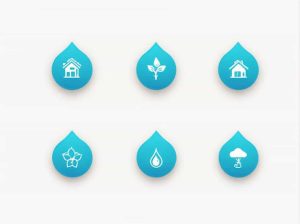Methane (CH₄) is one of the most potent greenhouse gases contributing significantly to global warming. Although it exists in smaller concentrations compared to carbon dioxide (CO₂) methane has a much higher heat-trapping ability—over 25 times more potent than CO₂ over a 100-year period.
Methane emissions come from both natural and human activities. Understanding where methane comes from and how it impacts the environment is crucial in addressing climate change. This topic explores the primary sources of methane emissions their environmental impact and potential solutions to reduce methane release.
Major Sources of Methane Emissions
Methane is released from a variety of natural and human-induced sources. Below are the most significant contributors:
1. Agricultural Activities
Agriculture is the largest human-related source of methane primarily due to livestock farming and rice cultivation.
A. Livestock (Enteric Fermentation)
Cattle sheep and other ruminants produce methane during digestion. The process known as enteric fermentation occurs in the stomachs of these animals as microbes break down food. Cows alone contribute to a significant portion of global methane emissions.
B. Manure Management
Animal waste stored in lagoons or piles generates methane as it decomposes anaerobically (without oxygen). Poor manure management increases methane emissions especially in industrial-scale farms.
C. Rice Paddies
Rice cultivation is another major source of methane. Flooded rice fields create low-oxygen environments where methane-producing bacteria thrive. The longer the fields remain underwater the more methane is emitted.
2. Fossil Fuel Production and Use
The extraction processing and use of fossil fuels release large amounts of methane.
A. Oil and Gas Industry
Methane leaks occur at various stages of oil and gas extraction processing and transport. These leaks often called “fugitive emissions” result from faulty equipment poor maintenance or deliberate venting during operations.
B. Coal Mining
Coal seams contain trapped methane known as “coalbed methane.” When coal is mined methane escapes into the atmosphere. Underground coal mines release more methane than surface mines due to higher gas concentrations.
3. Landfills and Waste Management
Decomposing organic waste in landfills is a significant source of methane.
A. Landfill Gas Emissions
When food scraps paper and other organic materials break down in landfills they produce methane under anaerobic conditions. Without proper landfill gas capture systems this methane escapes into the air.
B. Wastewater Treatment
Sewage and industrial wastewater contain organic matter that decomposes and produces methane. Wastewater treatment plants can either release or capture methane depending on their management practices.
4. Natural Sources
Methane also comes from natural sources although these emissions are generally balanced by natural methane absorption processes.
A. Wetlands
Wetlands including swamps marshes and peatlands are the largest natural source of methane. Waterlogged soils create low-oxygen environments where methane-producing microbes thrive. Seasonal changes and climate conditions affect methane output from wetlands.
B. Termites
Termites produce methane as part of their digestion process. While individual termites emit only tiny amounts the vast number of termites worldwide makes them a notable source.
C. Ocean and Permafrost Methane
Methane hydrates—frozen methane deposits trapped in ocean sediments and Arctic permafrost—are potential sources of large-scale methane release. Climate change is causing permafrost to melt potentially releasing stored methane into the atmosphere.
Environmental Impact of Methane Emissions
Methane contributes to climate change and air pollution in several ways:
1. Accelerating Global Warming
Methane is responsible for about 30% of the rise in global temperatures since the pre-industrial era. While it remains in the atmosphere for a shorter time than CO₂ (about 12 years) its warming effect is much stronger.
2. Air Quality and Human Health Effects
Methane itself is not harmful to humans but it contributes to the formation of ground-level ozone (smog) which can cause respiratory issues heart problems and reduced crop yields.
3. Feedback Loops and Climate Tipping Points
Methane released from melting permafrost or ocean hydrates could trigger self-reinforcing climate feedback loops leading to more warming and further methane release. This could accelerate climate change beyond human control.
Ways to Reduce Methane Emissions
Reducing methane emissions is one of the most effective ways to slow global warming. Here are some key strategies:
1. Agriculture and Livestock Management
- Improving animal diets by adding feed additives like seaweed can reduce methane emissions from cattle digestion.
- Better manure management such as composting or using methane digesters can capture methane for energy use.
- Alternate wetting and drying (AWD) techniques in rice farming reduce methane emissions by limiting the time fields are flooded.
2. Energy Sector Reforms
- Fixing methane leaks in oil and gas infrastructure through better monitoring and regulation.
- Capturing and utilizing coalbed methane instead of releasing it into the atmosphere.
- Transitioning to renewable energy sources such as wind solar and hydroelectric power to reduce fossil fuel dependence.
3. Waste Management Improvements
- Landfill methane capture systems convert methane into energy instead of letting it escape.
- Reducing food waste through better consumption habits and composting reduces landfill methane emissions.
- Upgrading wastewater treatment plants to capture and use methane as a renewable energy source.
4. Protection of Natural Carbon Sinks
- Preserving and restoring wetlands can help maintain the balance of methane absorption and release.
- Preventing deforestation and promoting reforestation efforts help maintain ecosystems that naturally regulate greenhouse gases.
Methane is a major contributor to climate change with emissions coming from agriculture fossil fuel extraction waste management and natural sources. While methane is more potent than carbon dioxide in trapping heat it also breaks down faster in the atmosphere making it a critical target for short-term climate action.
Reducing methane emissions through better agricultural practices energy reforms and improved waste management can significantly slow global warming. By addressing methane pollution we can make meaningful progress toward a more sustainable and healthier planet.


